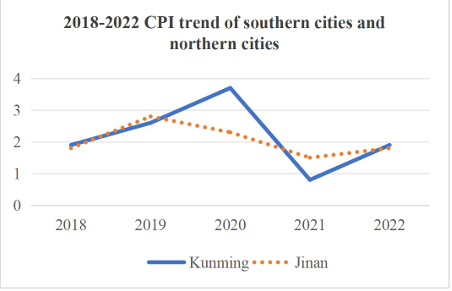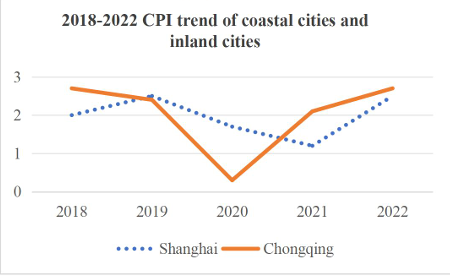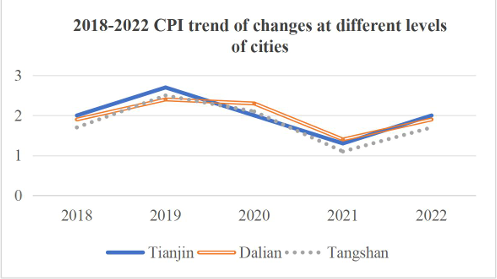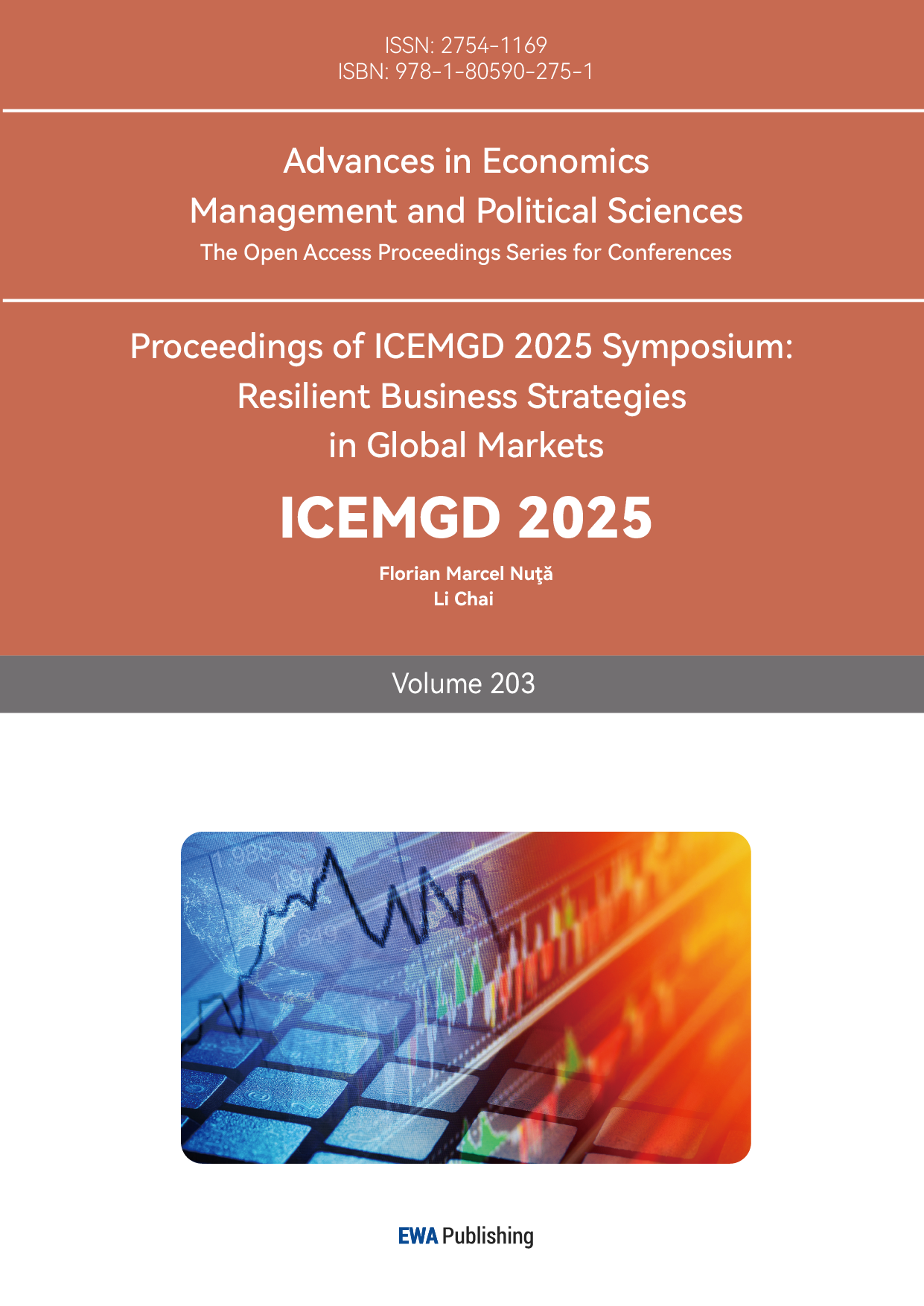1. Introduction
In recent years, global trade protectionism has shown a significant upward trend. The formation of this phenomenon is related to multiple factors. Slowing global economic growth, unbalanced regional development, and intensifying industrial competition, this has prompted many countries to shift to inward-looking economic policies. WTO data shows that after the 2008 financial crisis; the average annual growth rate of new global trade restrictions was 17%. In some advanced economies, in order to protect domestic industries and jobs, gradually raising tariff barriers, and strengthening subsidies for key sectors. In 2018, the trade friction between China and the United States escalated, and the two sides imposed high tariffs on each other, which caused an impact on the global supply chain. At the same time, geopolitical tensions have further fueled protectionist tendencies. Measures such as Brexit, the US "America First" policy, and the EU's increased industrial autonomy reflect the strengthening of economic nationalism. Regional conflicts have disrupted international supply chains, prompting countries to place greater emphasis on so-called "economic security", pushing manufacturing reshoring or seeking to restructure supply chains among political allies. The World Trade Organization monitoring data shows that the number of global trade restrictions has continued to rise in recent years, and the effectiveness of international trade rules has been challenged.
The trade war between China and the United States in 2025 will have a profound impact on the global economic pattern and household consumption behavior. It is not only a continuation of the economic game between the two countries, but also a profound reconstruction of the global trade structure. According to WTO data, the contribution rate of final consumption to Gross Domestic Product (GDP) from 2014 to 2023 increased from 50.2% to 82.5%, and the contradiction between consumption upgrading and external shocks is prominent. The cost of imported goods has risen sharply, forcing companies to adjust their supply chains, which in turn has led to higher consumer prices and lower real purchasing power of residents. At the same time, since the Trump administration unilaterally announced in early April this year that it would raise tariffs on some Chinese goods to the United States to 245%, China has raised tariffs on American goods to 125% as a countermeasure. So far, the economy and trade between the two countries have entered the brink of "hard decoupling". According to the National Bureau of Statistics, in the process of China's response to trade frictions, the ratio of household consumption to GDP (39.41%) has been lower than the international average (60.92%) for a long time, showing the structural contradiction of insufficient domestic demand.
As an important node connecting international trade and the domestic economy, household consumption is not only the ultimate bearer of trade frictions, but also the key focus of policy adjustment. This paper reviews literature from three dimensions: government policy, transmission path and regional differences.
This study has important theoretical value and practical significance. At the theoretical level, most of the existing studies on the response to consumption shocks are based on the assumption of a closed economy and fail to fully investigate the transmission mechanism of external shocks under the conditions of an open economy. This paper constructs a theoretical framework that includes the transmission channels of trade frictions, systematically analyzes the differentiated impact paths of exogenous shocks such as tariff barriers and supply chain disruptions on household consumption, and improves the theoretical system of consumption shock response. At the practical level, the research results can provide a scientific basis for government departments to build a buffer mechanism for trade frictions. On the one hand, identifying the heterogeneous influence characteristics of different income groups, regions and consumer goods, provides targeted guidance for the formulation of precise consumption subsidy policies and regional relief programs. On the other hand, based on the empirical evidence of the trade friction transmission link, this paper puts forward some suggestions for institutional innovation, such as the establishment of an import substitution industry cultivation fund, a strategic reserve system for key commodities and a cross-border supply chain early warning system. These measures will effectively enhance the resilience of the domestic consumer market and provide a policy toolbox for maintaining macroeconomic stability in the context of de-globalization.
2. Government response
In recent years, the consumption level of Chinese residents has shown significant improvement and structural optimisation. According to the National Bureau of Statistics, in terms of total volume, per capita consumer spending will grow from $13,220 in 2013 to $24,538 in 2022, an increase of 85.6 per cent over the decade, with an average annual growth rate of 7.1 per cent. Although China's economic performance has shown a steady upward trend, it still faces multiple challenges. Relevant scholars have found that the foundation of economic recovery is not yet solid, as evidenced by the continued weakness of consumer demand and the weakening of the momentum of fixed-asset investment growth.
The industrial Producer Price Index (PPI) continued to run at a low level, and the profitability of enterprises was squeezed [1]. On the other hand, it is worth paying attention to the slowdown in the growth of residents' income to inhibit the release of consumption potential. Deep adjustments in the real estate sector are restraining investment recovery; continued increase in deflationary pressure affects the expectations of enterprises' production and operation. Downward pressure on foreign trade and foreign investment has increased significantly; spillover risks from cyclical adjustments in the United States economy are accumulating.
In response to a series of problems, including weak consumer demand among Chinese residents this year, the General Office of the Central Committee of the Communist Party of China (CPC) and the General Office of the State Council issued the Special Action Programme to Boost Consumption. Local governments and relevant functional departments are required to promote the rebound of consumption as a key task of the current economic work, strictly implement the main responsibilities in accordance with the established division of responsibilities, strengthen cross-sectoral coordination and cooperation, and establish a sound long-term working mechanism.
3. Transmission mechanisms of trade frictions affecting consumption
3.1. Price transmission path
In terms of the transmission of tariff shocks on the consumption side, trade friction directly affects residents' consumption through changes in the prices of imported goods. With regard to the impact and mechanism of external tariff policy uncertainty on consumption in Chinese countries, some studies have shown that when external tariff policy uncertainty is weakened, it can significantly boost the growth of county residents' consumption [2]. In terms of changes in the structure of consumption, the sensitivity of different income groups to price fluctuations is uneven.
It has been suggested that as production becomes networked, the input-output relationship between sectors becomes closer, with the upstream production sector passing the chain to the downstream sector and then to the consumer. Tax distortions and changes in mark-up rates in production networks have a double effect on the tax burden of the chain, both directly and indirectly through the structure of the network [3].In terms of regional linkage transmission differences, China's Yangtze River Delta region equity investment activities in the number and scale dimensions of the cyclical fluctuation characteristics of the regional capital market on the macroeconomic situation changes and policy adjustments have a very strong reaction sensitivity. From an international perspective, China's low dependence on US imports and outstanding structural dependence, the IMF's forecast of global economic growth down to 2.8% in 2025, and in addition, electronics, transport equipment, chemicals and other industries have become high-risk areas for friction.
3.2. Income distribution effects
Regarding the impact of tax transformation on different industries, the tax burden of the secondary industry has continued to decline after the VAT transformation reform; the tax burden of the tertiary industry has declined significantly after the ‘camp transformation’; and the tax burden of the secondary industry and the tertiary industry have both declined during the period of large-scale tax cuts. The results of counterfactual calculations conducted by some scholars show that tax cuts for the secondary industry are more effective than tax cuts for the tertiary industry, and the output elasticity of intermediate products of the industries belonging to the secondary industry is larger, so tax cuts for them can expand the demand for intermediate products and stimulate the production of intermediate products [4].
Damage to property income as a result of widening income disparity. One is that stock market volatility can lead to shrinking capital gains, fluctuating bond market yields with rising credit risk, affecting cross-border investment returns, and wide fluctuations in the RMB exchange rate becoming the norm. Data from the Ministry of Commerce in April 2025 showed that after the US and China imposed tariffs on each other, the offshore RMB amplitude exceeded 1,000 pips in two days, and investors holding US dollar-denominated assets were exposed to the risk of exchange losses [5-7].
4. Heterogeneous character of impacts
In this paper, Kunming City in Yunnan Province is selected as the representative of the south, and Jinan City in Shandong Province as the representative of the north, both are second-tier cities, and their differences are reflected in the following figure.

Figure 1 illustrates the Consumer Price Index (CPI) trends in 2018-2022 for the southern second-tier cities represented by Kunming and the northern second-tier cities represented by Jinan. Kunming shows an upward trend in CPI in 2018-2020, followed by a sharp decline in 2020-2021 and then a rebound in 2021-2022, with relatively large fluctuations. In contrast, Jinan's CPI rises in 2018-2019 and trends downward in 2019-2022, with overall fluctuations relatively muted compared to Kunming. Kunming may be more sensitive to the epidemic in terms of industrial structure and consumption patterns, leading to large fluctuations in the CPI; while Jinan is relatively stable, perhaps thanks to its industrial structure, economic resilience and other factors, which played a stabilising role during the epidemic. In the past five years, the gap between fixed asset investment in the north and south regions has shown accelerated expansion, and the imbalance between the north and south of capital accumulation is intensifying; in terms of foreign trade, the southern provinces have long been ahead of the scale of imports and exports, and the average import and export volume of the northern provinces at the beginning of the reform and opening-up period was only 492 million yuan, while during the same period the southern region has reached 1.71 times the northern region, and the gap is further widening in the subsequent development [8].
This paper selects Shanghai as the representative city of the coastal area, Chongqing as the representative city of the inland area, and both are the same as the first-tier cities in the south, and their differences are reflected in the following figure.

Figure 2 shows the CPI trends of Shanghai (representative of coastal cities) and Chongqing (representative of inland cities) in 2018-2022. As the same more economically developed first-tier city, Shanghai's CPI rose in 2018-2019, and 2019- 2021 showed a downward trend, and then rebounded in 2021-2022, with a diversified economic structure and well-developed service industries such as foreign trade and finance, resulting in relatively smooth fluctuations in its CPI; whereas Chongqing's industrial structure, market supply and demand may be differently affected by external shocks, and its CPI continued to decline in 2018-2020. Although the consumption level of residents in China's inland areas has increased as a whole, it shows obvious regional differentiation characteristics, with the consumption highland gradually concentrating in the southeast [9]. However, the urban-rural income divide is still significant, and its causes can be summarised in four aspects. First, the single structure of consumption supply and the lack of commodity diversity constrain consumption upgrading; second, due to geographic constraints, the logistics infrastructure is weak, and the circulation of materials is inefficient; third, the construction of consumption support facilities is lagging ; and fourth, part of the population still maintains the traditional concept of consumption, which inhibits the release of consumption potential [5].
In this paper, Tianjin is selected as the representative of the new first-tier cities, Dalian in the three eastern provinces as the representative of the second-tier cities, and Tangshan in Hebei Province as the representative of the third-tier cities, all three of which are the same as the northern inland areas, and the differences are reflected in the following figure.

Figure 3 presents the CPI trends for Tianjin, Dalian, and Tangshan at different city tiers from 2018-2022. The overall trend is consistent, with all three cities experiencing a rise in CPI in 2018-2019, a decline in 2019-2021, and then a recovery in 2021-2022. Tianjin reached a relatively high point in 2019, with relatively obvious fluctuations; Dalian and Tangshan have relatively small fluctuations, and the trend is relatively close, but Tangshan is at its lowest point in 2021. These cities have certain commonalities in terms of the economic cycle, industrial structure, and the policy environment, making prices similarly affected by the overall economic situation, policy regulation and control, and other factors. Overall, the spatial interaction between consumer cities shows the dual characteristics of spillover effect and siphon effect, while the radiation-driven effect of high-center cities on low-center cities shows obvious intensity decay and spatial differentiation law with the increase of distance [10].
5. Conclusion
This paper analyses the impact of trade frictions by aggregating and analysing the methods of other scholars, pointing out a series of effects, and further analysing the heterogeneity of their impact on each region. Governments have constructed a multilevel response system and are dynamically adjusting their policies in the light of the development of new business models such as digital trade and the reconfiguration of global value chains. Trade friction affects multiple dimensions of residents' lives, from the macro to the micro, from the country to the individual, forming a progressive, gradually refined and more systematic transmission chain. It affects the price fluctuations in the market, and at the level of the industrial chain, it will form the input-output network and regional linkage differences, making the linkages between various sectors closer and transferring them level by level; trade friction affects the income distribution of the residents through the impact of income distribution, which in turn affects the widening of the income gap and the reform of the tax system. China's regional consumer markets show a trend of deeper convergence in consumption levels, intensification of inter-regional economic interactions and price transmission mechanisms. Despite differences in the sensitivity and speed of adjustment to economic shocks in different regions, in the long run, consumption dynamics across regions still exhibit a high degree of dependence and strong correlation with the overall trade environment, forming a resilient and synergistic pattern of evolution.
Of course, there are still some limitations in this paper, the coverage of the sample is not comprehensive enough, resulting in a lack of universality of the statement; the relevant data of individual cities have not yet been released, and the data of their consumption indexes are unavailable, which affects the dynamic timeliness of the data; in addition, this paper has only selected a few aspects to start the overview, and the vision is limited and not comprehensive enough. In the future, it is necessary to further optimise the review with the improvement of the statistical system and the extensive reading of the literature.
The situation of world trade is unpredictable, but overall, it will further develop in a good direction. The country needs to adapt to market transformation and build a resilient economic system, industries need to improve supply chain competitiveness, enterprises need to adapt to the new rules, and they need to be adept at, and deeply apply, digital technology (live e-commerce, social e-commerce, etc.); at the same time, scholars need to promote synergistic regional development, the gap between urban and rural consumption is expected to be gradually narrowed, and the construction of urban agglomerations will promote the synergistic development of cross-regional consumption, and scholars need to create a Better consumer environment; and in the face of the complex international trade environment needs to improve the resilience of the industrial chain supply chain, cultivate the competitiveness of national brands, enhance the risk-resistant ability of the consumer market, and provide solid support for the construction of a new development pattern.
References
[1]. Sun, X.T., Liu, X.D., Wu, Q. (2025) Macro policy is more active and helpful, economic operation is steadily picking up and improving--analysis of the economic situation and policy suggestions in the first quarter of 2025. Price Theory and Practice 1-7.
[2]. Lang, L.H., Li, W.W. (2023) The impact of external tariff policy uncertainty on Chinese residents' consumption. Business Economics and Management (9), 36-48.
[3]. Yan, B.Q. (2025) Measurement and structural analysis of industrial chain tax burden - an approach based on production network structure model. China Industrial Economy (4), 23-41.
[4]. Chen, X.M., Pan, S.Y., Ren, X.M. (2025) Industry tax burden, production network and macroeconomy. Zhejiang Social Science (2), 4-19+155.
[5]. Wang, X.F. (2022) Spatio-temporal evolution of consumption and boosting strategies in inland areas under the new development pattern. Regional Economic Review (1), 107-116
[6]. Ruggeri, G. (2022) Household energy consumption in the United States.
[7]. Amponsah, S.O., Lee, Y. (2024) Do conspicuous consumption motives explain eco-friendly consumption decisions? Evidence from social media exposure effects. Proceedings of the International Conference on Management and Economics 1(1), 39-59.
[8]. Betz, T., Pond, A. (2019) The absence of consumer interests in trade policy. Journal of Politics 81(2), 585-600.
[9]. Hoyos, M., Stellian, R. (2025) Dynamic trade elasticities and comparative advantages: Evidence from a PTA. Manuscript submitted for publication.
[10]. Uehara, T.K., O'Reilly, K. (2023) Trade policy and sustainability: The WTO, the international fair-trade charter, and five principles for system change. Environment and Society Programme, The Royal Institute of International Affairs.
Cite this article
Zhang,S. (2025). Impact of Trade Frictions on Consumption: Mechanisms, Heterogeneity and Research Perspectives. Advances in Economics, Management and Political Sciences,203,186-192.
Data availability
The datasets used and/or analyzed during the current study will be available from the authors upon reasonable request.
Disclaimer/Publisher's Note
The statements, opinions and data contained in all publications are solely those of the individual author(s) and contributor(s) and not of EWA Publishing and/or the editor(s). EWA Publishing and/or the editor(s) disclaim responsibility for any injury to people or property resulting from any ideas, methods, instructions or products referred to in the content.
About volume
Volume title: Proceedings of ICEMGD 2025 Symposium: Resilient Business Strategies in Global Markets
© 2024 by the author(s). Licensee EWA Publishing, Oxford, UK. This article is an open access article distributed under the terms and
conditions of the Creative Commons Attribution (CC BY) license. Authors who
publish this series agree to the following terms:
1. Authors retain copyright and grant the series right of first publication with the work simultaneously licensed under a Creative Commons
Attribution License that allows others to share the work with an acknowledgment of the work's authorship and initial publication in this
series.
2. Authors are able to enter into separate, additional contractual arrangements for the non-exclusive distribution of the series's published
version of the work (e.g., post it to an institutional repository or publish it in a book), with an acknowledgment of its initial
publication in this series.
3. Authors are permitted and encouraged to post their work online (e.g., in institutional repositories or on their website) prior to and
during the submission process, as it can lead to productive exchanges, as well as earlier and greater citation of published work (See
Open access policy for details).
References
[1]. Sun, X.T., Liu, X.D., Wu, Q. (2025) Macro policy is more active and helpful, economic operation is steadily picking up and improving--analysis of the economic situation and policy suggestions in the first quarter of 2025. Price Theory and Practice 1-7.
[2]. Lang, L.H., Li, W.W. (2023) The impact of external tariff policy uncertainty on Chinese residents' consumption. Business Economics and Management (9), 36-48.
[3]. Yan, B.Q. (2025) Measurement and structural analysis of industrial chain tax burden - an approach based on production network structure model. China Industrial Economy (4), 23-41.
[4]. Chen, X.M., Pan, S.Y., Ren, X.M. (2025) Industry tax burden, production network and macroeconomy. Zhejiang Social Science (2), 4-19+155.
[5]. Wang, X.F. (2022) Spatio-temporal evolution of consumption and boosting strategies in inland areas under the new development pattern. Regional Economic Review (1), 107-116
[6]. Ruggeri, G. (2022) Household energy consumption in the United States.
[7]. Amponsah, S.O., Lee, Y. (2024) Do conspicuous consumption motives explain eco-friendly consumption decisions? Evidence from social media exposure effects. Proceedings of the International Conference on Management and Economics 1(1), 39-59.
[8]. Betz, T., Pond, A. (2019) The absence of consumer interests in trade policy. Journal of Politics 81(2), 585-600.
[9]. Hoyos, M., Stellian, R. (2025) Dynamic trade elasticities and comparative advantages: Evidence from a PTA. Manuscript submitted for publication.
[10]. Uehara, T.K., O'Reilly, K. (2023) Trade policy and sustainability: The WTO, the international fair-trade charter, and five principles for system change. Environment and Society Programme, The Royal Institute of International Affairs.









